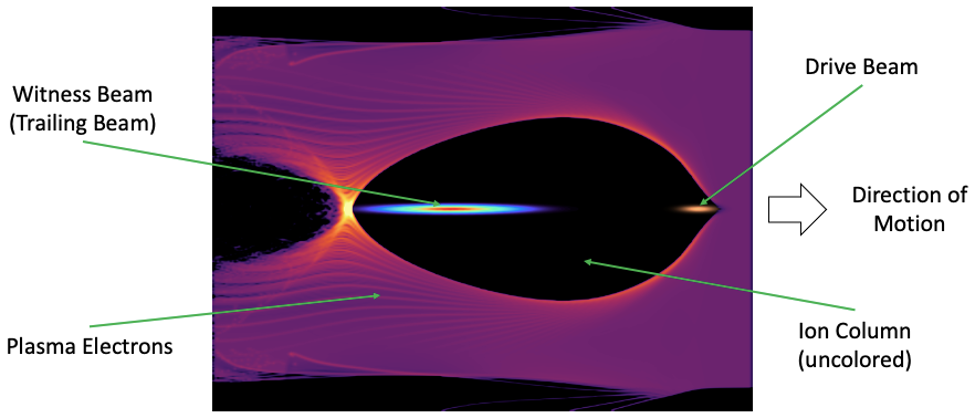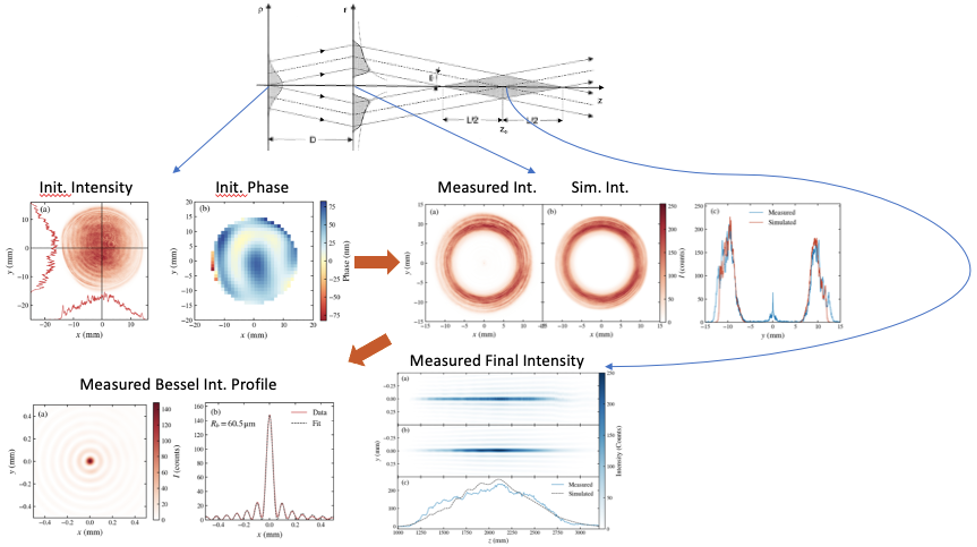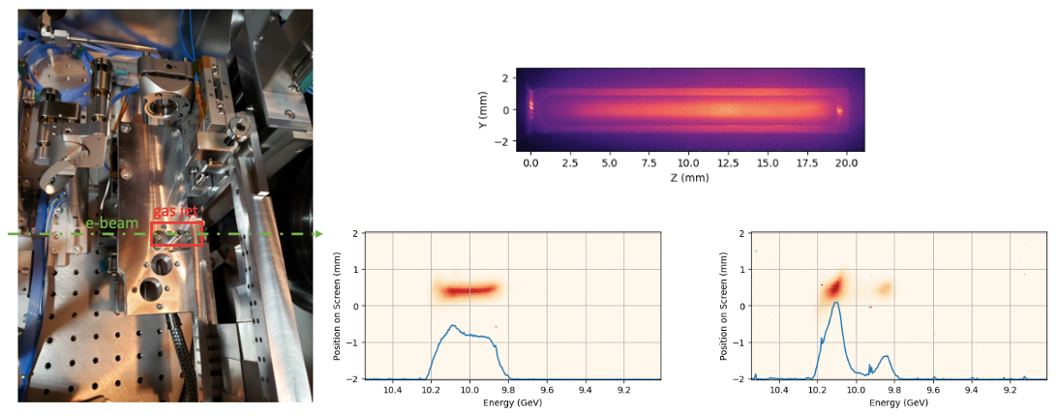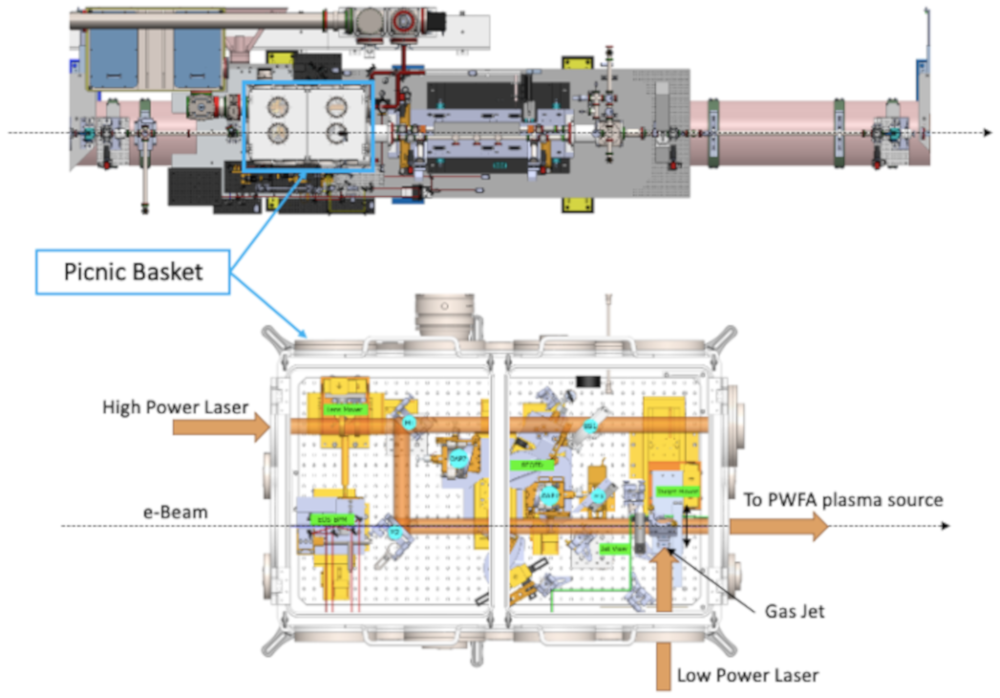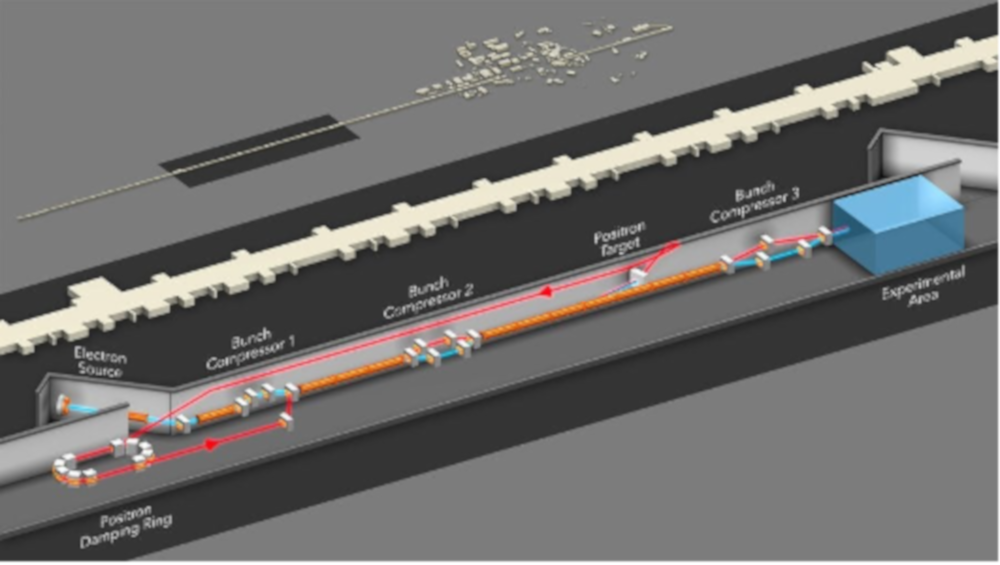Home
Wakefield Acceleration and Radiation Generation
WARG Group Leader: Prof. Mike Litos
The Wakefield Acceleration and Radiation Generation (WARG) research group is led by Prof. Mike Litos of the CU Physics Department and the Center for Integrated Plasma Studies (CIPS). Our primary area of research is plasma wakefield acceleration, which has the broad goal of miniaturizing the size— and correspondingly, the cost—of high energy particle accelerators by leveraging the extremely strong electric fields capable of being produced in plasma waves. This field of research is highly interdisciplinary, synthesizing the physics and techniques from the areas of lasers, plasmas, and particle beams. We carry out experiments in our high-power laser lab on CU campus and at the FACET-II facility at SLAC National Accelerator Laboratory.
A plasma wakefield accelerator (PWFA) can be thought of as an energy transformer: one source of energy (e.g. a laser pulse or an electron beam) is used to drive a plasma wave, and that energy is converted via the plasma wakefields into the kinetic energy of the accelerated particle beam (separate from the wake-driving electron beam). The rate of energy transfer from the driving source (laser pulse or drive beam) to the accelerated particle beam is two-to-three orders of magnitude greater than the maximum energy transfer rate of conventional particle accelerator technology. For this reason, a plasma-based accelerator technology may be able to reduce the size and cost of future high energy particle beam applications by orders of magnitude.
Accelerators are the most powerful tools for studying nature at the smallest and scales of space and time. High energy particle colliders, such as the Large Hadron Collider (LHC) at CERN, provide close to our only experimental window into the most fundamental constituent particles and fields in the Universe. Meanwhile, high brightness X-ray light sources, such as the Linear Coherent Light Source (LCLS) X-ray free electron laser (FEL) at SLAC National Accelerator Laboratory, allow us to resolve structures and processes at the atomic level. This kind of tool is invaluable to researchers across a wide array of fields and backgrounds, including biophysics, chemistry, pharmaceuticals, condensed matter physics, materials science, high energy density physics, and more. Both examples—particle colliders and light sources—require high energy particle beams, and those in turn require very large and very expensive particle accelerators. In the case of the former, PWFA-based technology may prove to be the only economically feasible path to continue to expand the energy frontier of high energy particle physics indefinitely into the future. In the case of the latter, PWFA technology may provide a path toward the democratization of high-brightness X-ray sources, permitting not just a handful of national laboratories to control access to these invaluable tools, but many universities and companies throughout the world.


